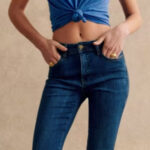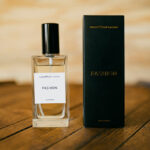Mens fashion 2014 was a unique year, but what were the key trends that defined it? Mens-fashion.net will guide you through the iconic styles, offering tips to incorporate vintage inspiration into your modern wardrobe.
1. The Resurgence of Beards: To Grow or Not to Grow?
The year 2014 witnessed the full bloom of the beard trend. Were you a Shoreditch barista, a member of a folk band, or perhaps Jeremy Paxman? If so, sporting a beard was practically mandatory.
If you didn’t fit into those categories, perhaps it’s best to have a shave. While well-maintained beards can add character, it’s crucial to consider whether they suit your face shape and personal style. According to a 2014 article in GQ, “A beard should complement, not consume, your face.”
2. Finding the Perfect Fit: Size M or Size L?
In 2014, the golden rule was comfort. There’s nothing stylish about a man squeezed into too-tight clothing. Fit and comfort are of utmost importance.
Skinny jeans and deep-V T-shirts may have been trendy, but they didn’t flatter everyone, especially those over a certain age or build. The right size and fabric can make all the difference. As Esquire noted in their Fall 2014 issue, “Comfort is the new luxury. Choose clothes that feel as good as they look.”
3. Bag It Up: Rucksack, Man Bag, or Briefcase?
Practicality reigned supreme in 2014 when it came to bags. The choice depended on the occasion.
Rucksacks were suitable for hiking, cycling, or running to work, while briefcases were ideal for carrying important documents to business meetings. The term “man bag” was still somewhat controversial. A soft-sided briefcase in brown leather offered the best of both worlds: style and functionality. According to a survey by the Fashion Institute of Technology (FIT) in July 2014, briefcases experienced a 30% increase in sales among men aged 25-44, suggesting a shift towards more professional and sophisticated accessories.
4. Investing in Quality: How Much Should You Spend on a Suit?
The adage “you get what you pay for” held true in 2014. While high-street brands offered affordable options, investing in quality pieces like suits, shoes, and winter coats was worthwhile.
A well-made suit could cost at least £500, and a winter coat around the same. Handmade items from England, France, or Italy often indicated better ethical practices and superior craftsmanship. These investments not only looked better but also lasted longer.
5. Shades of Cool: Which Sunglasses Will Make You Look Cool?
Sunglasses were an essential accessory in 2014, but finding the right pair was crucial. Just because a style looked good on Steve McQueen, Bob Dylan, or Marcello Mastroianni didn’t guarantee it would suit you.
The key was to choose sunglasses that complemented your face shape. Trying them on before buying was essential. Avoid sunglasses with big logos, and it’s best to go for a more classic look, for a more stylish and subtle statement.
6. Embracing Color (Cautiously): Can You Wear Color?
The stylish man’s color palette in 2014 was generally limited to blue, grey, and sometimes brown. Navy was the safest and most versatile color.
Formalwear was typically black or white, with midnight blue as an option. Shirts were white, pale blue, or pale pink. Accessories provided opportunities to inject color, such as red socks, yellow ties, or patterned scarves. Bold choices like red jackets or yellow shirts were best avoided.
7. Pattern Play: What About Patterned Shirts?
Pattern was essential in 2014, but it required expertise. The general rule was to avoid clashing patterns.
If you wore a check jacket, your shirt should be a solid color, and vice versa. Mixing patterns with texture was a good approach, such as pairing a patterned shirt with a plain knitted silk tie.
8. Office Attire: How Do You Dress for the Office?
A well-fitted suit was a must in 2014. It made you stand up straighter and walk taller.
A good suit should fit properly, with soft and light cloth. Off-the-peg suits were readily available, but tailoring was essential for a perfect fit. Double-breasted suits were making a comeback, with a more relaxed cut that moved away from the excessively buttoned-up styles of the past decade.
9. The Tie Debate: Must You Wear a Tie?
Business shirts should be understated, allowing the tie to add a pop of color and personality to conservative outfits.
Taking fashion cues from politicians like Cameron, Clegg, and Miliband, who often went without ties, was a style mistake. A suit and shirt without a tie could leave you looking uncool.
10. Decoding “Smart Casual”: What Does It Actually Mean?
“Smart casual” was a confusing term in 2014, often used to make men apprehensive. In such situations, it was better to be over-dressed than under-dressed.
Smart casual typically meant a soft, lightweight blazer (navy, of course), business shirt, chinos (also navy), and loafers or brogues. Alternatives included a cotton bomber jacket over a lightweight sweater and polo shirt, or a weekend jacket in tweed or corduroy.
11. Style No-Nos: Is There Anything You Definitely Shouldn’t Wear?
A simple rule: If James May would wear it, avoid it. His outfits often broke every rule of elegant dressing.
This was a lighthearted reminder to avoid ghastly combinations and clashing patterns.
12. Denim Dilemmas: How Do You Wear Jeans?
Jeans might seem humble, but they were difficult to get right. Many spent years searching for the perfect pair, only to see that style discontinued.
APC’s New Standard Regular-Fit Selvedge Denim Jeans were a recommended exception. These jeans featured a medium-rise waist, straight leg, slim-ish but not skinny fit, raw indigo denim, and no unnecessary branding or embellishments.
13. Trainer Talk: Should You Wear Trainers to Work?
Trainers, or sneakers, were a subject of debate in 2014. Some style snobs considered them “kit” to be worn only for their intended purpose.
However, a younger generation embraced sports shoes, and colorful, mass-produced designs were back in fashion. Unless you were a twentysomething creative at a bleeding-edge east London start-up, save your trainer-wearing for the weekend.
14. Fleece Faux Pas: Is It Ever OK to Wear a Fleece?
The answer was generally no, unless you worked at Iceland or presented Springwatch.
Otherwise, wearing a fleece was considered a style faux pas.
15. Accessorizing Right: How Much Attention Should You Pay to Accessories?
A good Swiss-made watch was a worthwhile investment, as it was often the only way for men to adorn themselves.
Handmade English leather shoes were also essential, including leather oxfords, brogues, and loafers for work, as well as weekend brogues, desert boots, or chukkas, and suede loafers. These items were built to last and could be worn for years.
16. Bedtime Style: What Should You Wear in Bed?
There were no strict rules in the bedroom. Wear what makes you comfortable.
Whether it was pyjamas, a silk dressing gown, a vintage football strip, a leather catsuit, or nothing at all, the choice was yours.
Ultimately, fashion should be about doing and wearing whatever makes you happy.
The Enduring Impact of 2014 Menswear Trends
The fashion mens trends of 2014 emphasized comfort, quality, and practicality. They also demonstrated the importance of fit and choosing clothes that suit your personal style. While some trends, like the ubiquitous beard, may have faded, the principles of investing in quality pieces and dressing appropriately for the occasion remain timeless. To explore these trends further and discover how to adapt them to your modern wardrobe, visit mens-fashion.net for expert advice and inspiration.
Ready to Elevate Your Style?
Don’t let the ever-changing world of menswear intimidate you. At mens-fashion.net, we provide the information and inspiration you need to navigate the latest trends with confidence. Whether you’re looking for advice on finding the perfect suit, mastering smart casual, or simply updating your wardrobe with timeless pieces, we’ve got you covered.
Visit mens-fashion.net today and discover:
- In-depth articles on the latest menswear trends.
- Style guides for every occasion.
- Tips on how to build a versatile and stylish wardrobe.
- Expert advice from fashion professionals.
Don’t wait any longer to unlock your personal style potential. Join the mens-fashion.net community and start your journey to a more stylish and confident you.
You can also visit us at 227 W 27th St, New York, NY 10001, United States or call us at +1 (212) 217-5800.
FAQ: Mens Fashion 2014
1. What were the defining characteristics of fashion mens trends in 2014?
Mens fashion in 2014 was marked by a blend of classic tailoring and casual elements. Key characteristics included the prominence of beards, a focus on well-fitting garments, and the rise of practical accessories like briefcases and quality leather shoes.
2. Were beards really that popular in 2014?
Yes, beards were extremely popular in 2014, especially among certain subcultures like baristas and folk musicians. Whether or not you should grow one depended on your personal style and facial features.
3. How important was fit in 2014 menswear?
Fit was crucial. Overly tight or ill-fitting clothing was considered a major style faux pas. Comfort and proper sizing were prioritized.
4. What kind of bags were considered stylish for men in 2014?
Practical bags like rucksacks and briefcases were favored. “Man bags” were still a debated term. Soft-sided brown leather briefcases were a stylish and functional option.
5. Was it worth investing in expensive suits in 2014?
Yes, investing in quality suits was considered worthwhile. A well-made suit not only looked better but also lasted longer and often reflected better ethical production practices.
6. What colors were popular for men’s clothing in 2014?
Navy, grey, and brown were the most popular and versatile colors. Brighter colors were typically reserved for accessories.
7. How were patterns used in men’s shirts in 2014?
Patterns were important, but clashing patterns were to be avoided. Mixing patterns with textures was a good approach.
8. What was considered appropriate office attire for men in 2014?
A well-fitted suit was essential for office attire. Double-breasted suits were making a comeback with a more relaxed cut.
9. Was it necessary to wear a tie with a suit in 2014?
While not always mandatory, a tie was often seen as a way to add personality and color to a conservative outfit. Going without a tie could risk looking uncool.
10. What did “smart casual” mean in 2014?
“Smart casual” was a somewhat vague term that generally meant a blazer, business shirt, chinos, and loafers or brogues. It was better to be over-dressed than under-dressed in such situations.

